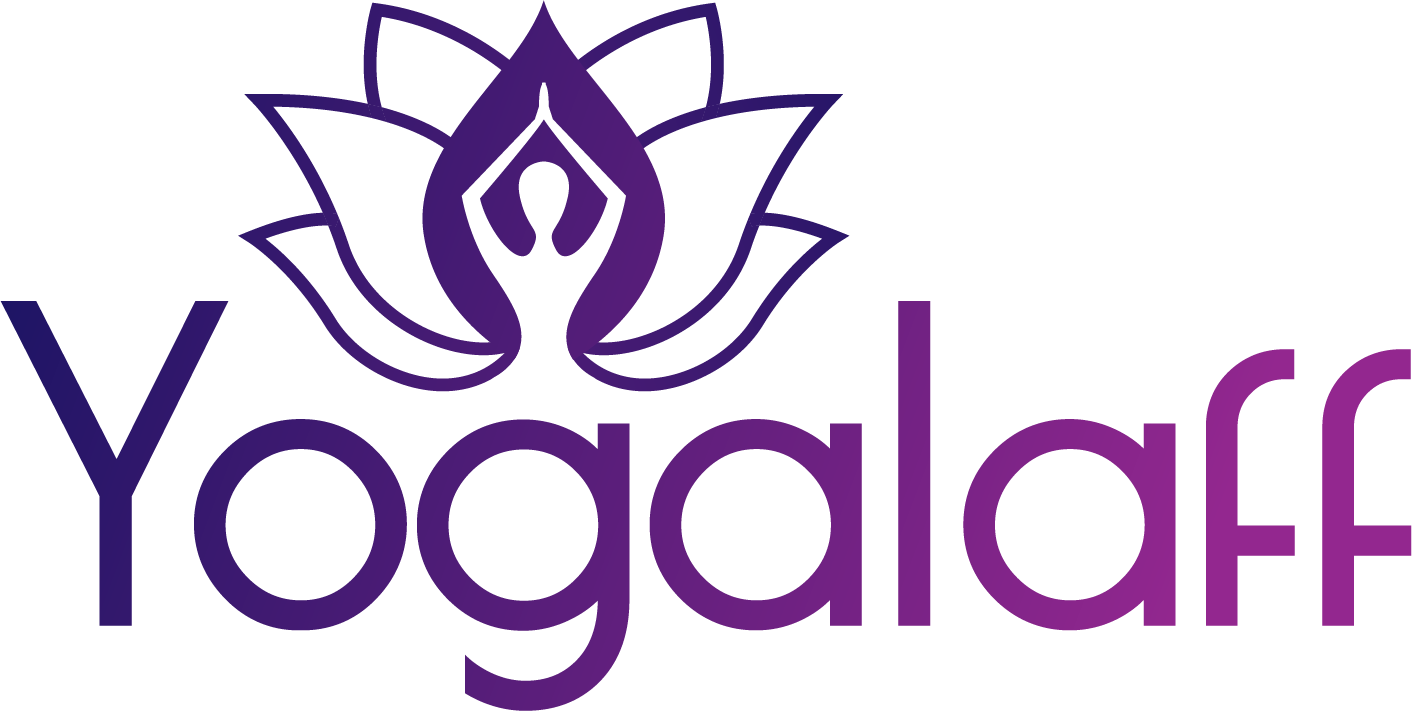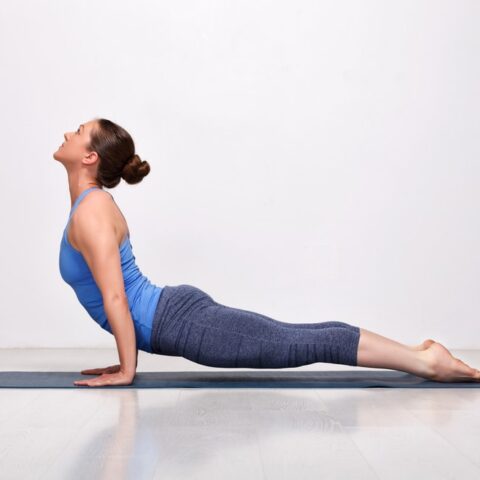Ashtanga yoga is a style of yoga that was created by Sri K. Pattabi Jois. This particular practice of yoga connects the breath with a series of poses that are done by the yogi in six different series as progression occurs.
The connection produces intense internal heat and purifying sweat that detoxifies the muscles and organs.
If yogis are always looking for a challenge and need more structure in their practice, Ashtanga Yoga is a perfect choice. This practice has a rigorous structure and each series must be mastered before you move onto the next.
If a yogi is new to yoga in general, this practice is not recommended because of its challenging aspects and most of its practitioners have done other styles of yoga consistently for years in order to prepare.
Having a handle on other styles of yoga before trying this practice will help significantly because of the repetition that makes up Ashtanga.
This yogic practice is full of incredible benefits and will have several yogis constantly coming back to their mats.
Ashtanga Yoga translates to “eight-limbed” which will essentially allow the yogi to embark on a spiritual journey. The eight limbs are Yama, Niyama, Asana, Pranayama, Pratyahara, Dharana, Dhyana and Samadhi.
These eight limbs are described in the Yoga Sutras which are simple guidelines or a map on how to arrive at one’s best self in the physical, spiritual, mental and emotional realms.
The same poses and series are done during each practice until the yogi has progressed to the next level. Each ashtanga series has the same poses as the previous but with a few more advanced poses that are added on.
There is not a set deadline for the series to be completed, each series is done at the yogi’s own pace and discretion.
History of Ashtanga Yoga
This challenging yet rewarding practice was first introduced in Mysore, India by Sri K. Pattabi Jois and slowly made its way to the Western world through his students.
Jois had quite a few years of yoga under his belt before he created Ashtanga. At the young age of 12, he started practicing with the instructor T. Krishnamacharya.
His instructor was practicing Ashtanga type poses but it was not quite the practice itself and with that, he took what he learned and created the vinyasa portion of this practice. Jois became the leading practitioner and most widely known Ashtanga Yoga instructor.
Ironically some of his first students were students from the Western world that made their way to India to see what this new vinyasa style of yoga was all about.
The students practiced and mastered all of the series of this practice after years and years of intense consistency. Seeing the amazing benefits and purely falling in love with the practice, his students were able to take what they learned under his guidance and integrate it into the Western world.
Today in the Western world Ashtanga Yoga seems as though it has always been there. Yogis are drawn to this style through its challenging series that must be mastered one by one before moving onto the next.
Yogis gain an understanding of the practice and move through each series at their own pace. Jois passed away in 2009 but his legacy and teachings of this practice live on through his family as well as some of his very first students.
Benefits of Ashtanga Yoga
The benefits of Ashtanga Yoga are incredible due to its challenging and rigorous makeup.
The practice of yoga, in general, has always been praised for its wide variety of benefits for the mind, body, and soul. Ashtanga Yoga is recommended to be practiced every single day in order to master each series as well as to actually see the benefits that come with that consistency.
If this practice is done consistently the yogi will begin to see an increased strength and flexibility in their body, a positive approach to stress management and the ability to obtain and maintain a sense of inner peace.
Yogis will also notice a natural ability to focus as well as a distinct awareness of their body and movements. Some yogis have even said they have an increased sense of rhythm that they did not possess before doing a daily Ashtanga Yoga practice.
This intense cardio workout will allow the yogi to burn fat and tone muscles. With the advanced level and challenging approach to this practice, yogis can go at their own pace, progressing to a new series as they feel comfortable.
Other benefits of this practice include improved core strength, prevention of injury, a lesson in breath and development of a wellness plan.
As yogis do Ashtanga day in and day out, the different poses will improve their core strength. It has been said that poor core strength comes from weak back muscles so the key is to strengthen your back muscles. Your core is the center of your body and once that is strengthened you have a better chance at preventing injury.
Staying mindful that this practice is extremely challenging and it is important to practice with an experienced yoga instructor that will also help you with learning how to breathe properly through each pose.
Breath is important on and off the mat. We all use our breath in everyday life situations and interactions. This practice prides itself in using the Ujjayi breathing method which is the act of moving purified air through the nostrils each and every time you inhale and exhale (i.e., take a breath).
As with all styles of yoga, the Ashtanga practice promotes the development of a wellness plan that brings yogis all over the world closer to themselves. A connection of mind, body, and soul is the end result and consistent practice will aid in that.
Ashtanga Yoga Poses
Ashtanga Yoga is not your traditional style of yoga although the layout is a vinyasa type, each series offers the same exact poses over and over again.
The structure of traditional Vinyasa Yoga classes changes with each class based on what the instructor or students are feeling that day. Ashtanga Yoga is more strict and there are six series that must be mastered by the yogi.
This practice is led by experienced instructors who will lead yogis through the first two series and ensure that they fully master each and every one.
First or primary series, intermediate or second series and Sthira Bhaga, the group of the last four series. The first two series are the most popular ones and that most yogis stay with practicing. The last four series are the most difficult and most yogis do not arrive there but if they do, it takes them many, many years to master even one.
To start off in this practice yogis will need to do the first (primary) series which is also known as Yoga Chikitsa. This series is made up of 75 poses that are all meant to realign your spine, detoxify your body, build strength, flexibility, and stamina in the yogi.
The poses consist of sun salutations, standing poses, seated poses, inversions, backbends and at the end of all of that – relaxation. Every yogi should be prepared to do this series each time for one and a half to two hours.
The intermediate or second series also known as Nadi Shodana has the same 75 poses plus a few more advanced ones. This series cleanses and strengthens the yogi’s nervous system and energy channels throughout their body.
It is important to note that just because a yogi has mastered a series does not mean they have to move onto the next series, it is not a requirement. Yogis are drawn to this particular practice because each series and pose are done at their own comfort level and what is best for their body at that moment.
Sthira Bhaga, the group of the remaining four series in the practice and strictly focuses on advanced arm balancing poses. Only a handful of Ashtangis can say that they have mastered the first two series and are able to move to these.
Ashtanga Yoga is one of the most advanced practices and should only be done by yogis who are seeking a challenge as well as intensively structured yoga sequences (series of postures). If a yogi does arrive at the last four series and masters them, that is an incredible achievement.
Once all of the six series have been completed, it may be rewarding to become a certified Ashtanga Yoga instructor to then pass on to other yogis, the knowledge and wisdom you have gained by completing your own spiritual journey through yoga.
Eight-Limbs of Ashtanga Yoga
The eight limbs are Yama, Niyama, Asana, Pranayama, Pratyahara, Dharana, Dhyana and Samadhi. Each limb deals with a different aspect of our lives and are not done in order but as the yogi progresses on their spiritual journey an understanding of a limb is gained.
Meditation is said to help in achieving the completion of all of the limbs. All of the eight limbs serve a purpose for the yogi and at the end are all linked to one another.
Yama is the makeup of ethical standards and integrity, Niyama is obtaining a practice of self-discipline and constant observations, which can be done through daily meditation. The self-discipline of Niyama can prepare you for Asana.
The Asana limb requires the yogi to sit in an upright seated position perfectly still with a straight spine for a certain period of time without moving.
Pranayama is the ability to re-direct positive energy to the parts of the body that are craving it and drawing out the negative energy wherever it is present in the body; this ability will increase the yogi’s consciousness.
Pratyahara is the natural ability to regain control of one’s thoughts and attention, to go inward if things around you are becoming hectic. The goal is not to be influenced by external forces, which then leads to Dharana.
Dharana is the ability to have an intense focus and concentration on one single thing whether it is a thought or action. The intensity of that connects to Dhyana which is a consistent meditation on a higher power and once arrived at that thinking Samadhi becomes the final limb.
Samadhi is an absolute surrender to that higher power. An absolute surrender will make you one and you will feel a sense of completeness. Samadhi is the last of the eight limbs and rounds out the true meaning of the yogi’s spiritual journey.
Conclusion
Ashtanga Yoga is not for the faint of heart. Challenging, rigorous yet rewarding all at once, this practice has been taking over the Western world since the 1970s and shows no signs of stopping anytime soon.
Yogis must master each of the individual six series before moving onto the next one in line. The first two series are what most yogis start and master and continue to practice.
Only a select few are able to advance to the remaining four series. Each of the six series is made up of specific poses to target different parts of the bodies at various stages of development.
Ashtanga Yoga is more than just poses and series to master, the eight limbs of the practice must be completed as well. The eight limbs are Yama, Niyama, Asana, Pranayama, Pratyahara, Dharana, Dhyana and Samadhi. Each limb serves a purpose to help the yogi on their spiritual journey.
It does not matter where a yogi is on their Ashtanga journey because the practice as a whole is full of benefits.
Overall increased strength and flexibility, positive approaches to stress management, the development of an innate ability to become in-tune with your body and movements, improved core strength, an overall understanding of the breath, increased prevention of injury and the creation of a wellness plan.
This practice has truly made a name for itself, putting down roots and winning the hearts of yogis everywhere.

